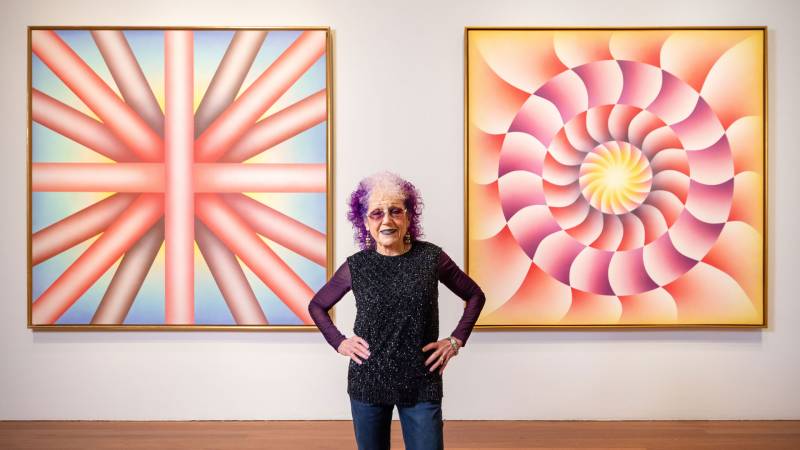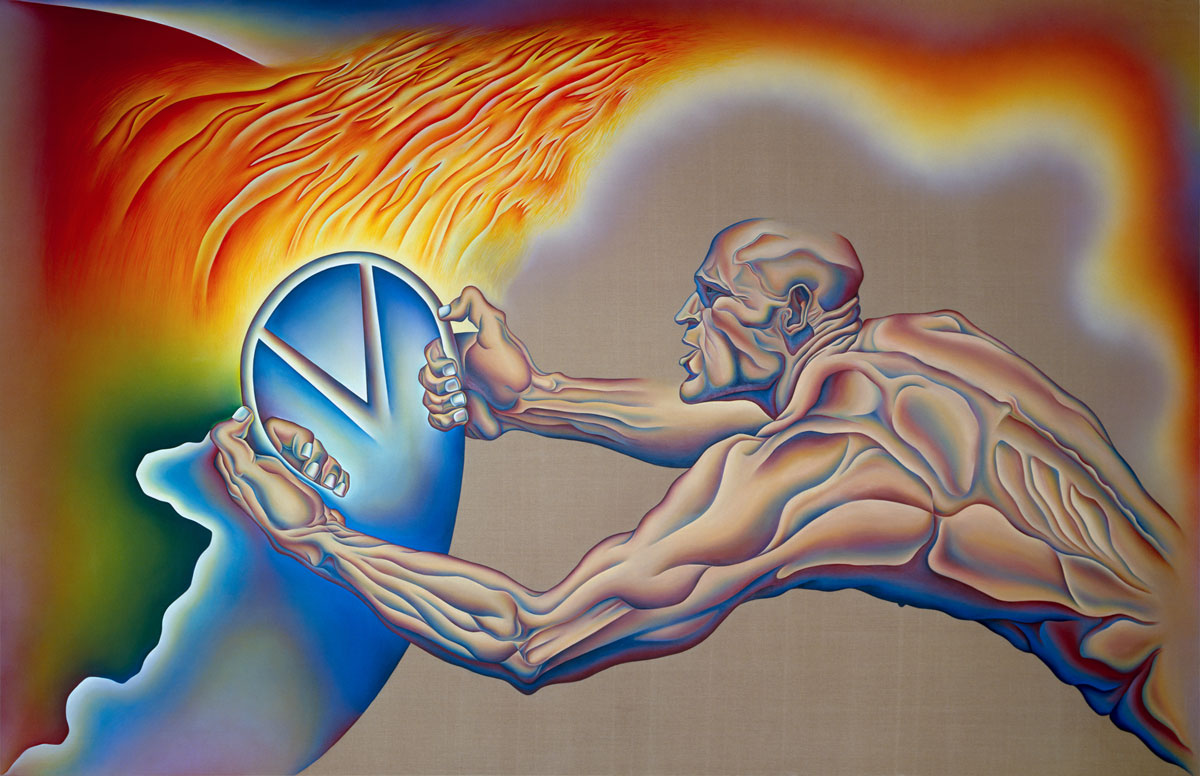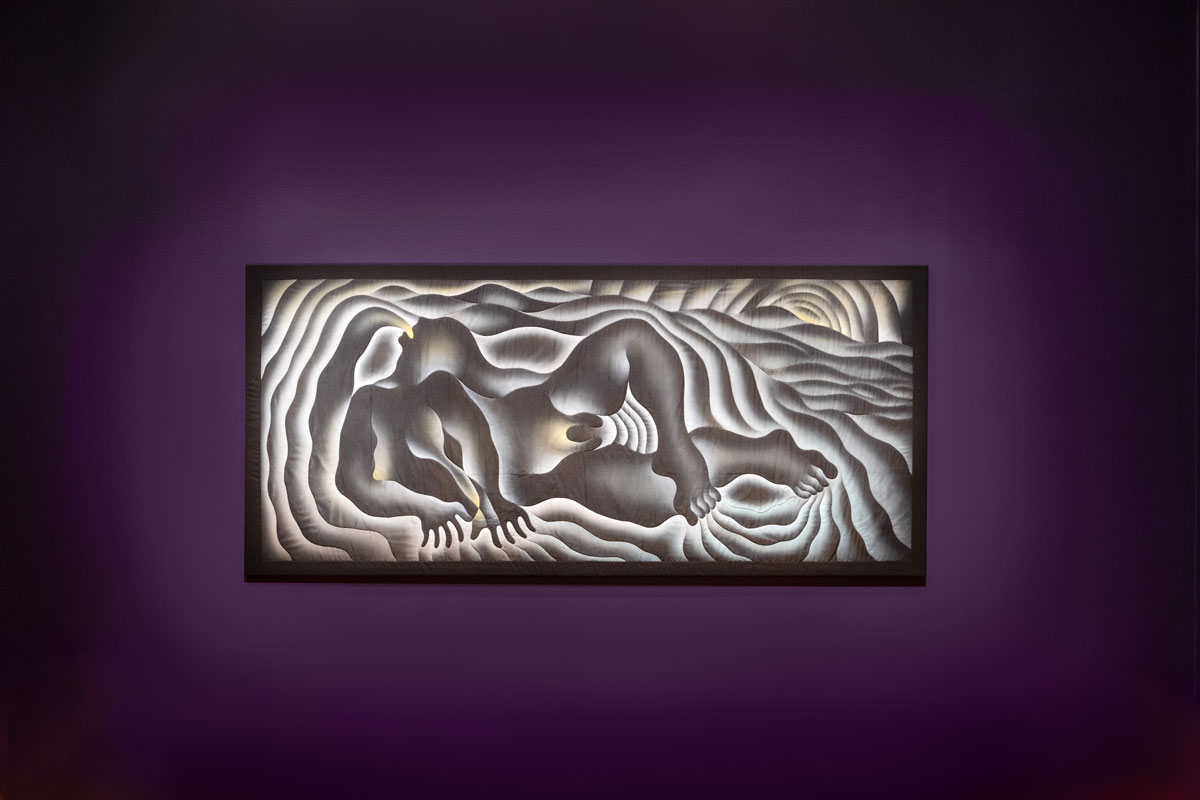The de Young Museum’s Judy Chicago: A Retrospective opens with what appears to be a death mask. It’s the artist cast in bronze from the waist up, head on a pillow, flowers in her hands and a cloth pulled up to her chest. Like Han Solo, but peaceful. Mortality Relief, as the piece is called, and its zoological analog Extinction Relief are part of the (very much alive) artist’s recent meditation on death and extinction, a project called The End. In an accompanying series of small, luminous paintings on black glass, she imagines the ways in which she might die—an unavoidable eventuality—alongside the animal populations decimated by human activity and disregard.
It’s a somber start to an exhibition that triumphantly celebrates Chicago’s six-decade-long career. Judy Chicago: A Retrospective presents the artist’s most recent artwork first, then traces a path backwards through seven bodies of work, including her best-known piece, The Dinner Party. It’s a tactic that might be disorienting had Chicago’s level of rigor or artistry ever varied. It didn’t. From her active, contemporary practice to her minimalist sculptures and paintings of the ’60s and ’70s, Judy Chicago: A Retrospective proves that Chicago has always been making at the highest level.
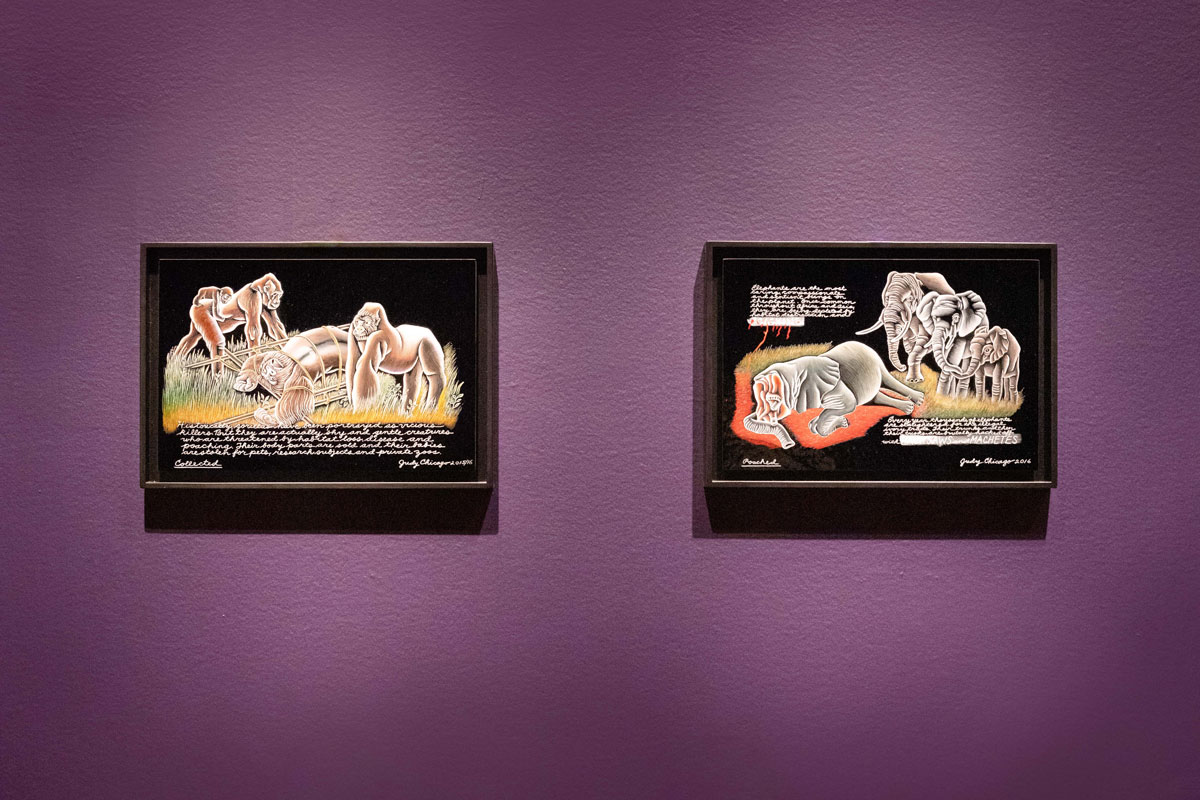
In each body of work (“body” doing double duty here as one of the artist’s primary fixations), Chicago adopts a new mode of making. For Holocaust Project (1985–93), it’s stained glass and cast glass sculptures; for PowerPlay (1982–87), it’s monumental figurative paintings on linen; for Birth Project (1980–85), needlepoint and tapestry. Chicago’s willingness to sketch, test and simply learn while honing her own skills and an artwork’s final appearance plays out in notebooks across the exhibition. Some projects span as many as eight years.
In a series of test plates painted with butterfly imagery and Chicago’s even, lovely script, she writes about learning china-painting in the early 1970s. “I realized that I would have to extract it from its historical context and make it a more flexible technique,” the plate reads. This same sentence might be applied to all of her work. She claims the “feminine arts” (pottery, needlework) and through repetition and painstaking detail, makes their value blatantly obvious. She adopts the “masculine arts” (sculpture, large-scale painting) and renders them in rainbow-hued pastels, emphasizing the toxic, destructive qualities of traditional masculinity.
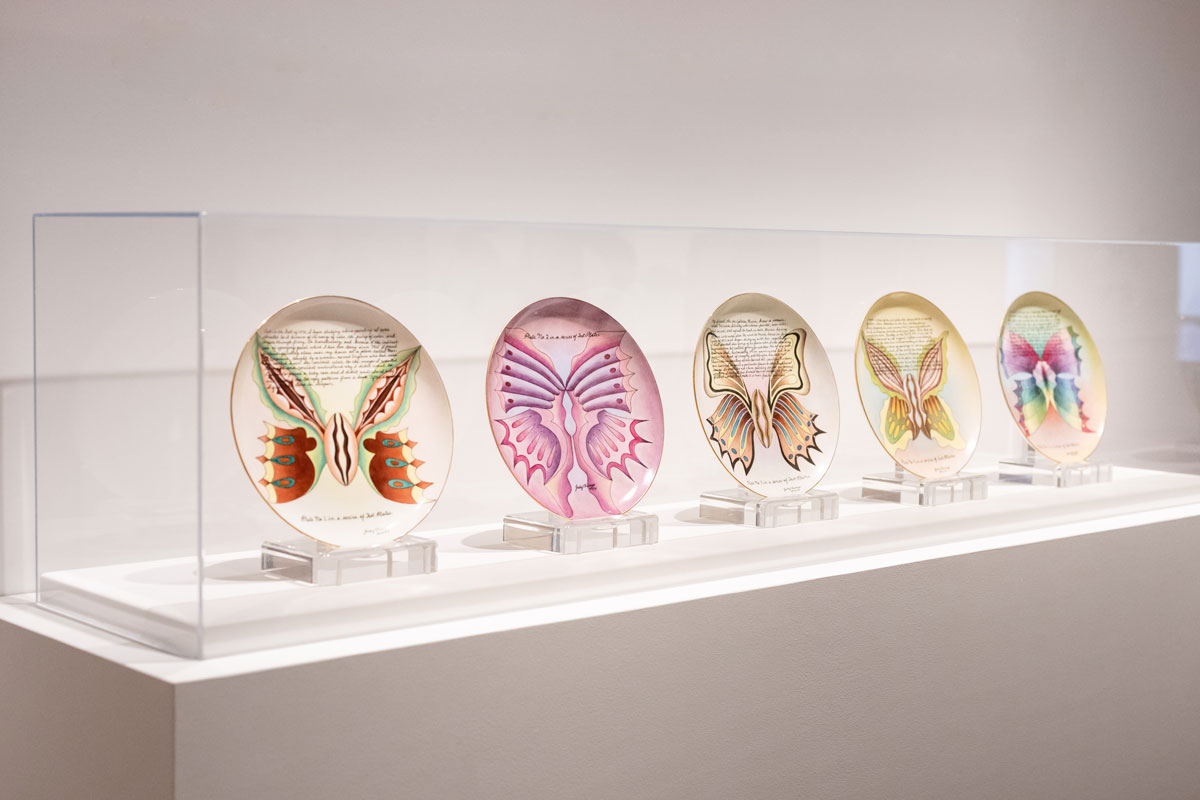
There’s an ease in Chicago’s virtuosic jumps from medium to medium that could obscure the hard, long, slow work at the heart of each project, but exhibition curator Claudia Schmuckli and assistant curator Janna Keegan take care to foreground process. That labor is most evident in the de Young’s presentation of The Dinner Party, Chicago’s best known piece. It is by necessity made up of test plates, cartoons for banners and studies on paper—the actual Dinner Party lives at the Brooklyn Museum.
